Woolwich Tesco tower: New development looks set to be approved
Revised proposals to construct 712 homes around Tesco’s Woolwich superstore look set to be approved if councillors follow planning officer advise.
A Planning Board meeting on 6th September is set to decide on proposals for a 15-floor block facing General Gordon Square which replaced plans for a taller tower.
That tower plan was rejected by Greenwich Council in 2018 and the Secretary of State in 2020 after a Public Inquiry.
One of the key features in a report alongside the forthcoming Planning Board meeting is that TfL were calling for a contribution of £944,000 for cycle lane improvements. Greenwich instead chose £150,000 while allocating £750,000 to GLLaB.

Long delay
Tesco has planned to build housing on site as far back as 2006 but sold land earmarked for Phases 3 and 4 to Meyer Homes upon completion of Phase 1 and 2 including the superstore and 259 homes.

Tesco didn’t gain many fans with the original two phases which won the Carbuncle Cup.

Fast forward a few years and new tower plans were unveiled from Meyer Homes. Out with dreary grey cladding and in with warm terracotta and well designed proportions.

It wasn’t a bad design at all, though drew criticism for its height and massing beside General Gordon Square.

What now looks like appearing is a shorter – but far less graceful – block.
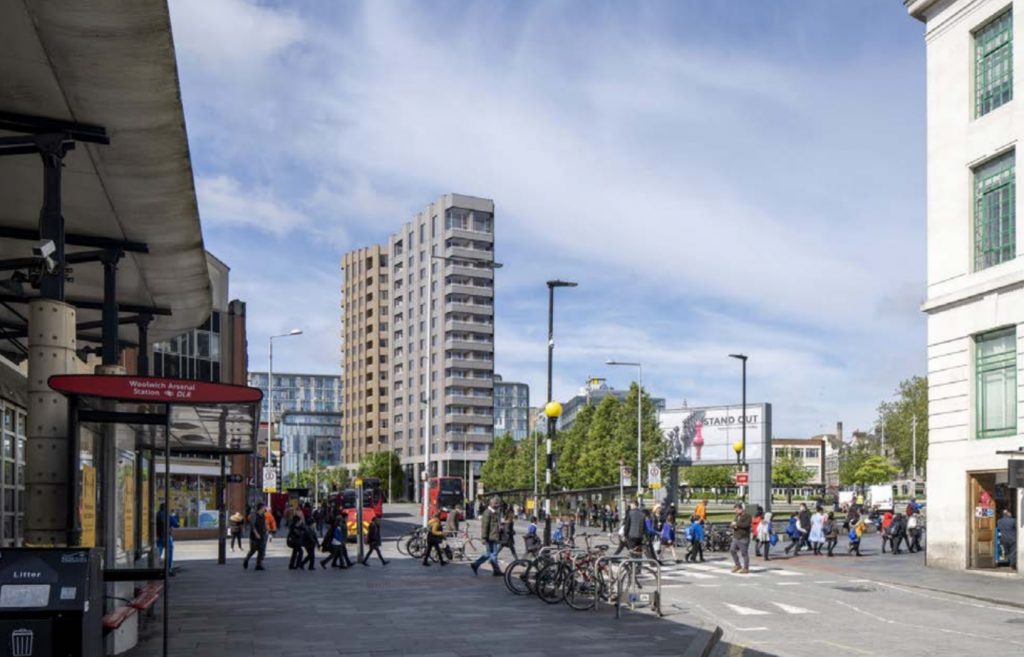
Green space outside Tesco would be lost, which had been planned for many years when outline plans were approved for development.

However some public space does exist in plans to permit outside seating from ground floor commercial units as the building’s footprint has been reduced.
A report before the Planning Board states:
“A reduction to the massing and form of the originally proposed building. The building footprint was reduced from 1,454 m2 to 892m2 with a further set back from the boundary by c.17m.
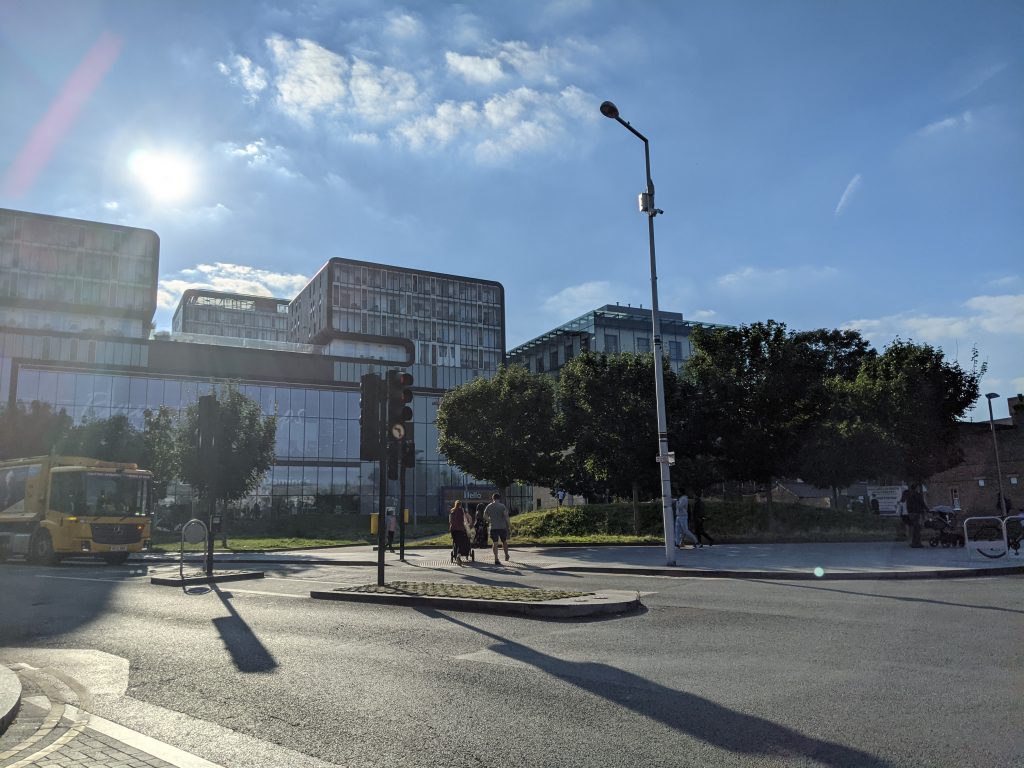
This has resulted in an increase in the public realm (from 2,566 m2 to 3,121m2), together with an increase to the proposed landscaping (from 2,540 m2 to 3,094 m2).
Historic England still oppose the plan, commenting: “whilst a significant improvement on the previous scheme for the site, would cause harm to the historic environment.” They mention the Conservation Area and impact on views.
Affordable homes
Out of 712 homes, 113 homes will be affordable at London Affordable Rent tenure. Note, I refuse to include expensive shared ownership in affordable figures as it simply isn’t for many. Mortgages, rent and service charges often work out to be extremely expensive.
Though even if they are included, affordable units total 23 per cent. Someway below targets of 35 per cent.

In response to remarks from the GLA, Greenwich Council state: “Council own reviewers BPS have considered the most recent comments by the GLA and are of the view that the applicant is providing the maximum reasonable affordable housing.”
The GLA also state: “GLA Viability Team have reviewed the applicant’s most recent Financial Viability Assessment, where they have raised comment regarding the justification of some inputs including Market sales values, Build Costs, Finance Costs, Benchmark Land Value, as well as recommending further sense checking of the viability assessment”.
Rear of site
Revisions have been undertaken to the rear of Tesco.
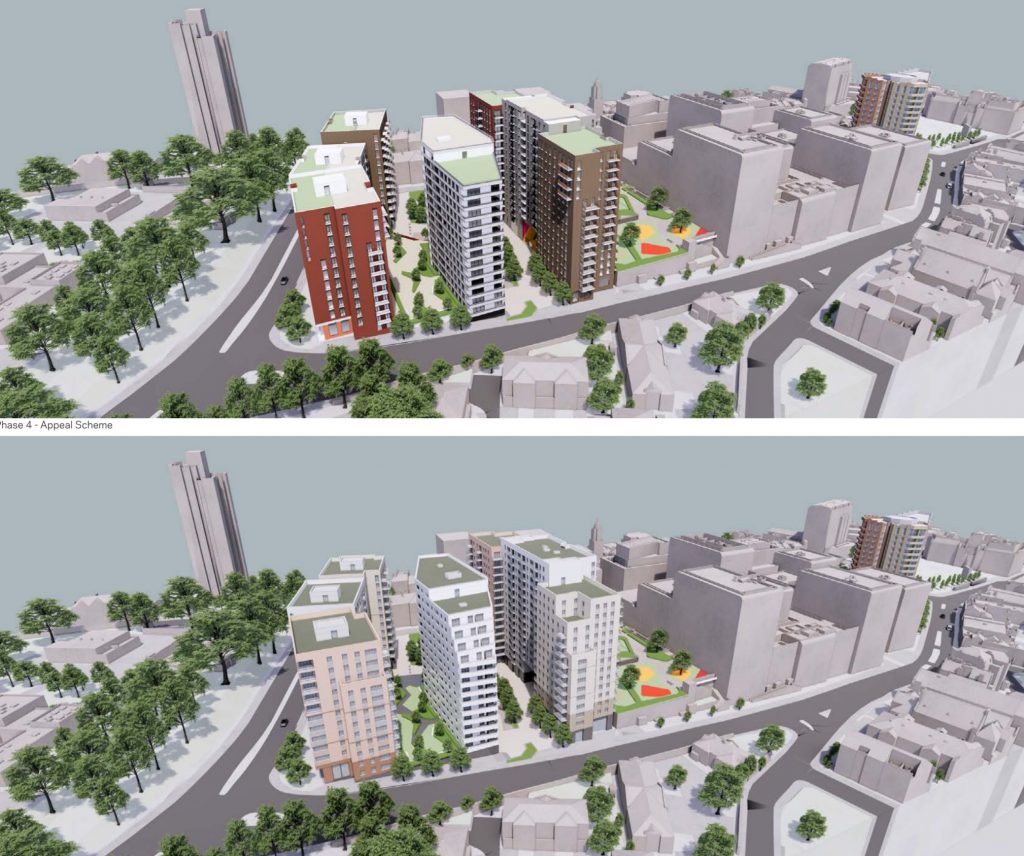
Massing is slightly different though housing totals are roughly the same as the rejected scheme.
Rather lumpen blocks dominate.

Transport
TfL have called for £944,000 for cycle lane upgrades and extensions. Greenwich havn’t done so. Note how they attempt to make it seems that’s down to the developer not wanting to fund, when the same council is happy to allocate £750,000 to GLLaB.

They tried, they really did, but it’s the horrible developer. Nothing to do with council departments and officers failing to balancing and switch some income from sacred cow GLLaB to other areas. Oh no. Perish the thought.
Now there’s nothing wrong in principle with GLLaB or what it does, but when you’ve seen as many planning applications and reports as me, very few councils are as lopsided at allocating funding at the expense of many, many other areas.

But Greenwich will keep blaming TfL and developers for their own decisions.

The site is car-free except for 18 bays for blue badge holder as would be expected with excellent public transport in the area, with Woolwich Crossrail now open and Woolwich Arsenal DLR and railway station the opposite side of General Gordon Square, offering Southeastern and Thameslink services.
Cycling provision is for “1,260 long stay residential cycle spaces and 23 cycle spaces for the commercial uses will be located at basement level and public realm of Phase 4 and ground floor and first floor level of Phase 3”.
Though of course Greenwich opted to allocate a small sum to cycle lanes so how many will bother?
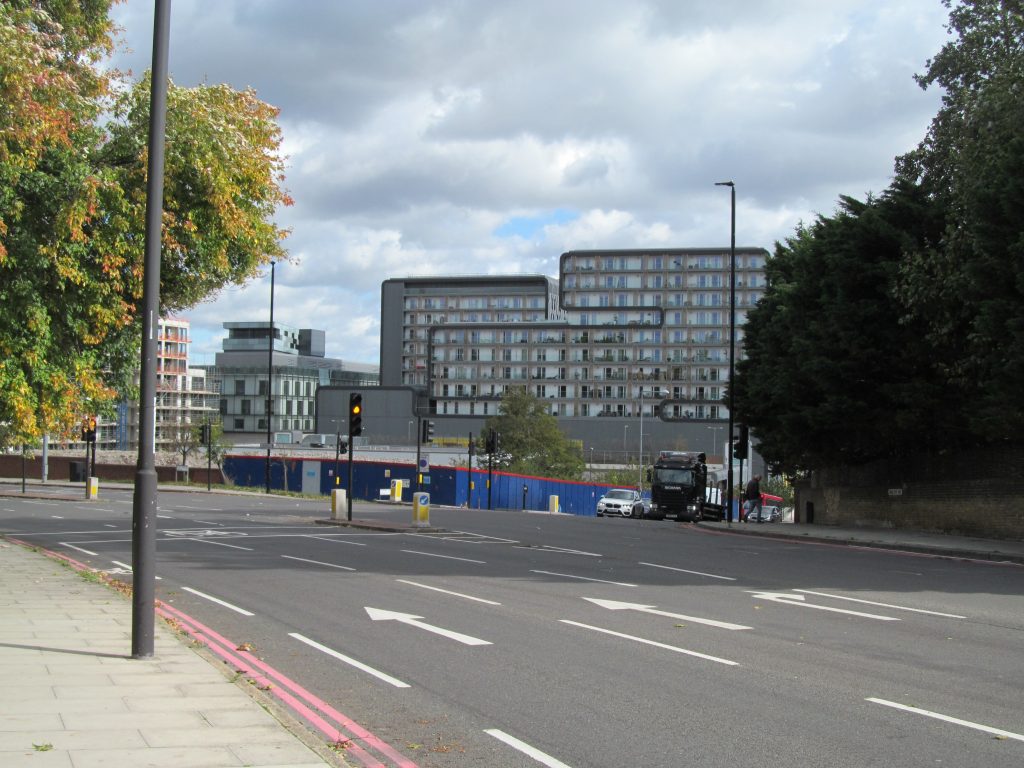
TfL have opted not to request any Section 106 income be allocated to bus services: “Following discussions with TFL, no concern was raised regarding bus capacity and no contributions are sought in this regard”.
In terms of parking, TfL stated “Without mitigation, there is also a risk on uncontrolled parking on the phase 4 site.”
Timeline for construction is for work to “commence during 2023 and to be completed in 2026. Within this overall programme, the construction works for Phase 3 will commence in 2023 and will finish in 2025 (2 years and 3 months); and Phase 4 will commence in 2024 and finish in 2026 (2 years and 6 months).”
Income for services
The report lists a break down in Section 106 revenue and allocation related to the developmen , which will provide:
Health: £1,926,260
GLLaB: £750,000
Cycle Infrastructure: £150,000 including extension of the cycleway from Woolwich Ferry roundabout.
Adult cycle training: £14,240
Legible London Signage and Wayfinding within the vicinity of the site: £10,000
Improvements to the junction of Woolwich Common and Ha-Ha Road: £100,000
Improvements to the South Circular £85,000
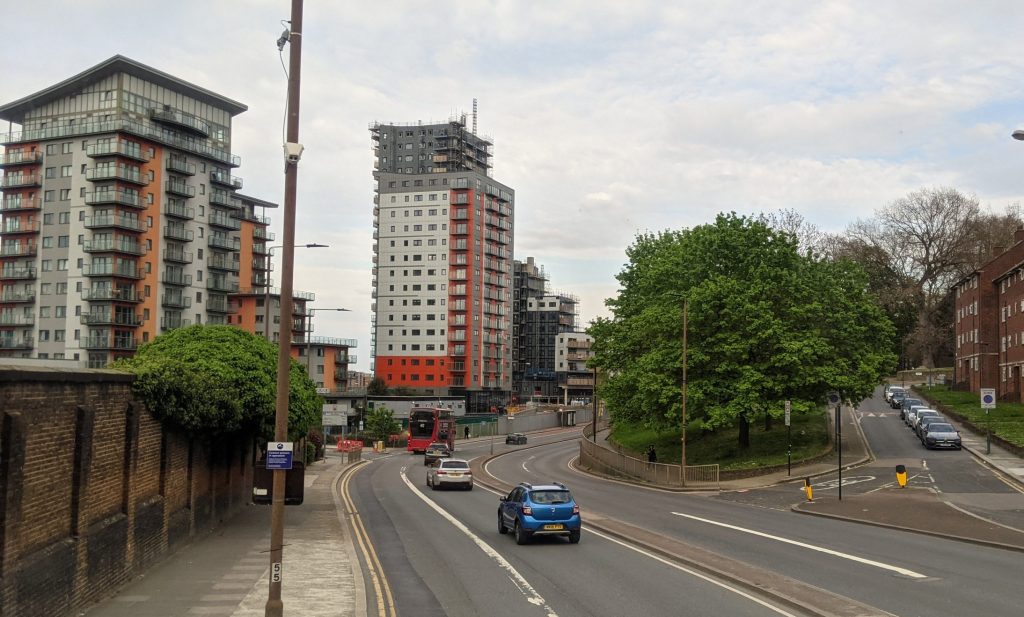
Mitigation toward loss of street trees: £32,854
Bus stop accessibility improvements: £25,000
Carbon offsetting to account for emissions from the development: £479,467

Biodiversity and ecological improvements: £100,000
GLLaB
All told, GLLaB sees double the amount of income allocated by the authority as does public realm work to encourage walking and cycling. So much for those recent reports on active travel and heathy living. Will the forthcoming Transport Strategy ever translate into funds for projects?
Very little has changed since the recent adoption of the Carbon Neutral strategy despite many warm words about walking and cycling. Remember the Health and Wellbeing Strategy? No? It seems council planners don’t either.
When it comes down to funding, GLLaB trumps it again. Those sums aren’t enough for transformative change. Over 1,000 cycle space may be included in the development but such small sums linking the site to dedicated cycle lanes won’t encourage cycling.

Ongoing errors and mistakes regarding the level and related income from the separate Community Infrastrucutre Levy also continue to hamper borough services, and this site is another prime example.
Failing to revise rates in 2018 as promised ensures another large loss of income from a site near excellent transport links. While CIL is now set to be revised from 2023, this will slip through.
Thus that potential revenue stream is not present, and what is available via S106 is again being funnelled towards the same areas, with various recent reports and strategies meaning little.

There’s very few major developments across London located so close to major transport links nor areas of employment (Canary Wharf is 10 minutes away and the City less than 20) that bring as little income to an area for improvements.

That is down to Greenwich Council themselves both at this site beside Tesco and many other developments in the area. They chose how Section 106 is spent and compound the issue though poor CIL administration resulting in very little income since 2015.
That has cost large sums for parks, housing estates, education, community facilities, transport and much else.
Running a site alone takes time and a fair bit of money. Adverts are far from enough to cover it and my living costs as a private renter.
You can support me including via Paypal here Another option is via Patreon by clicking here You can also buy me a beer/coffee at Ko-fi here There's also a Facebook page for the site here Many thanks






I see £150000 has been allocated to cycling. Just 1% of that diverted to footpath improvements would make a significant difference to those of us who walk. It’s cheap, carbon neutral and improves public health. But the cycle lobby is noisy and well connected and has acquired sums of money that walkers can only gasp at. The Green Chain Walk – once the pride of Greenwich, has been abandoned and is slowly but surely deteriorating, but I’m yet to hear any Cllr promote its cause or offer any explanation for its sad and sorry neglect.
GLLab, why?! For Christ’s sake, why?! Why must we continue to allow the Council to raid our public coffers to fund this ridiculous council pet! I have NEVER, EVER met a single solitary soul who has gotten employment through them! With as much money that is poured into it, surely I have met someone?! Oh, wait, I have! An employee of GLLab, though I’ve never asked her salary, it must be considerable, with all the moola the Council gifts the place?!
Great article, but I disagree on one point. There *is* a problem with GLLab in principle. Firstly, it doesn’t really do anything that recruitment agencies in the private sector don’t already do. Secondly, it isn’t really linked to the development: the construction of this block isn’t going to worsen the employment figures.
I supported the original plan of the terracotta tower for its nice design. By rejecting it, we’re now likely to have this dull building. Very, very disappointing! People complained about the height but let’s not dream, of course a tower will be built at this location.
This was a predictable outcome. The former design at a shorter height was probably a good compromise. Now a somewhat dull and dreary block is likely. I expect nasty materials when it comes to reserved matters’ application which will sail through